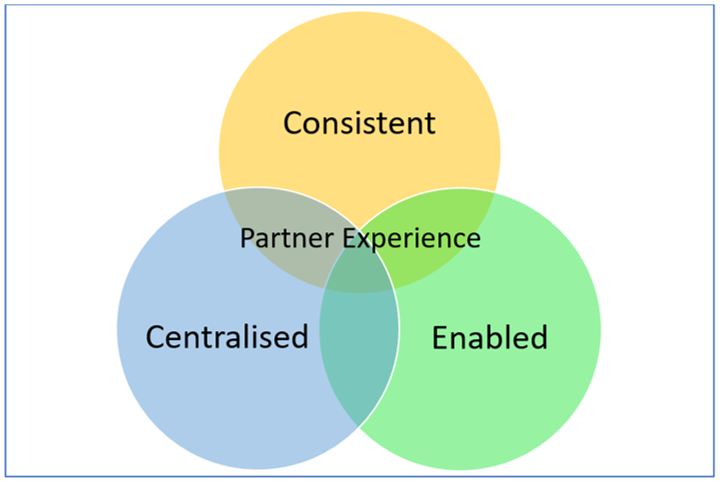[vc_row][vc_column][vc_column_text]The months of lockdown have yielded some great iso-baking results. But have you ever tried to bake something with too many cooks in the kitchen? Especially if they’ve all got slightly different cakes in mind and their own preferences. One person’s pavlova is somebody else’s sponge cake. The result is poorer for everyone- especially if you’re fighting over the same eggs.
We frequently see this problem with developing partnerships in organisations with federated models. Whilst state-based entities do maintain stronger connections to local communities, they can run into difficulty when trying to win and nurture national corporate partnerships. There is often duplication, with different states talking to the same corporate. Even worse, there’s outright competition for the same partner.
Federated structures can inhibit the full potential of corporate partnerships. Corporates only see one brand name and cause, whether it’s heart health, vision impairment or sick children. They aren’t interested in your internal structures; they simply want to be aligned to your cause. But we know that state-based entities, even with an overarching national head office, can be driven by different things. Leadership, priorities, culture and systems can all be slightly different. The differences might seem small, but like building the Sydney Harbour Bridge, a small variation can mean that you don’t meet in the middle when you’re finished.
The solution is to put the partner relationship at the centre. Good sales people often talk about a customer centric approach and this is exactly what federated organisations need to do with partnerships.
Some years ago, I worked with an international charity to create a truly global model for partnerships. It brought together offices as disparate as USA, UK, Sweden, Italy, India and Australia to provide a global partnership approach to big corporates that operate in multiple countries. That model enabled the charity to present a unified front when pitching for new partnerships and unlocked exponential value for everyone in the relationship. It enabled a partnership with Procter & Gamble that saw a cause marketing partnership launch in Australia and run in 5 countries consistently. If it can be done across international boundaries, then there’s no reason why it can’t be used for federated charities within Australia.
The following were the key features of the partner centric model.[/vc_column_text][vc_column_text]
[/vc_column_text][vc_column_text]
Consistent, standardised processes and systems
It helps if every state organisation is using the same processes and methodology with corporate partners. I’ve seen examples where a national head office and a state organisation disagree on whether a corporate fits their risk profile and appetite. Similarly, there needs to be a consistent approach to nurturing and growing relationships. The corporate partner isn’t interested in your internal politics, it just wants to be valued and managed in the same professional way across your organisation. Just because the opportunity didn’t originate in your state doesn’t mean that you shouldn’t commit resources to growing it. The outcome for your cause will be much greater impact in the end.
Centralised approach to relationship management
There needs to be someone who takes the lead in managing the corporate partnership. It does require a team approach that includes the input of others involved, but there needs to be one main cook in the kitchen somewhere. In the example with the international charity we had a ‘home donor’ rule. Wherever the corporate was headquartered, and the main relationship initiated, that office took the lead to coordinate and manage the partnership. Every other national office contributed to the working group and supported the partnership in their location. There was appropriate revenue sharing depending on the rollout of the partnership, but everyone was guided by the lead relationship team.
Enabled and supported partnerships
Technology, CRM systems and culture all enable a consistent and rewarding partner experience. If your organisation has mis-matching systems and CRMs, you will have to work around it with shared tools like Basecamp or Squarespace. The most important element is a culture that enables collaboration and prioritises the partner experience. How can you ask a partner to come on a journey with you if you’re all fighting over the map?
By placing the partner experience at the centre of the relationship, not making it work around your organisation’s structure, you will get exponentially more value from the partnership. You’ll get a bigger commitment of income and value, better profile for your brand and greater impact for your cause. If you force your partner to work around your internal barriers, then they’ll decide it’s all too hard and go somewhere else. Large corporates have enough of their own internal silos, they don’t want to have to deal with yours too.
If you want meaningful corporate partnerships that sustain over the long term, then take the approach of a fine dining restaurant. There are clear leaders, a system for communicating and working and a single focus on the end customer. Otherwise you’ll be presenting a dinner that’s overdone on the steak and undercooked on the veg, whilst dessert doesn’t make it to the table.
When you’re ready… here are three ways we can help:
- Subscribe to our Partnerships News in the box below and get our latest blogs, tips and free resources.
- Register for our next group training program Partnership Acceleration System to build your system for successful partnerships.
- Book a free 45 min consultation about your partnership needs: info@stellarpartnerships.com
[/vc_column_text][/vc_column][/vc_row][vc_row][vc_column width=”1/2″][vc_custom_heading text=”Don’t miss a blog. Sign up to our weekly newsletter.” use_theme_fonts=”yes”][vc_column_text]
[/vc_column_text][/vc_column][vc_column width=”1/2″][/vc_column][/vc_row]

